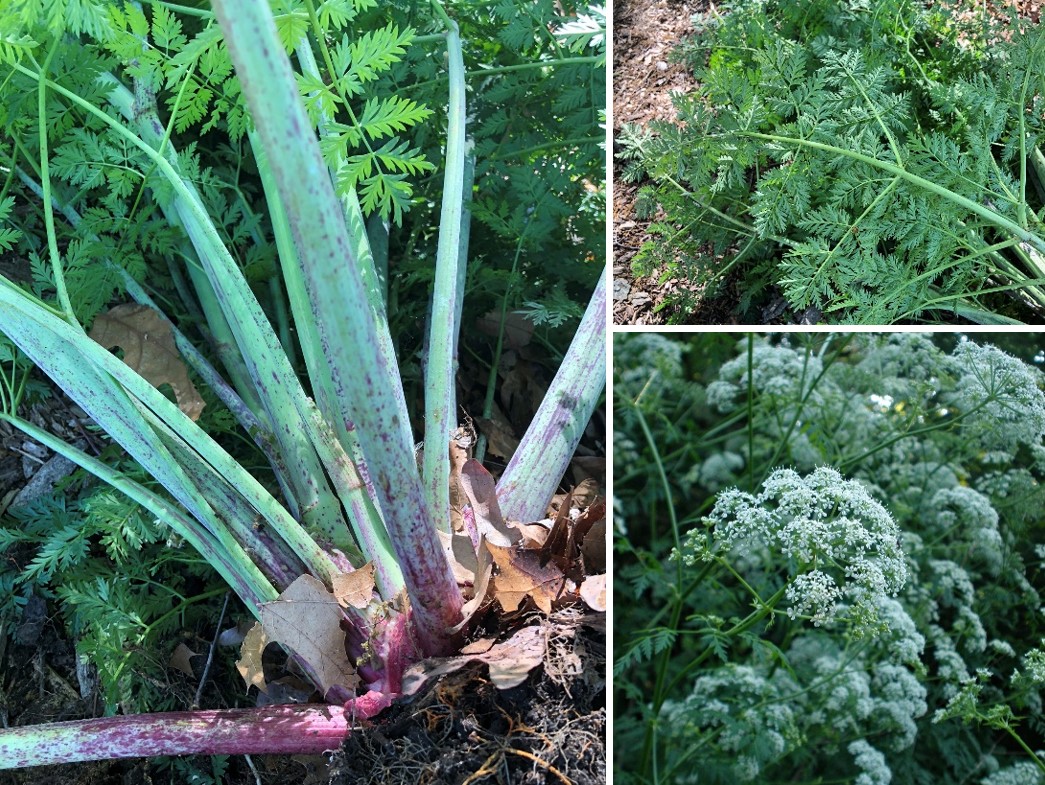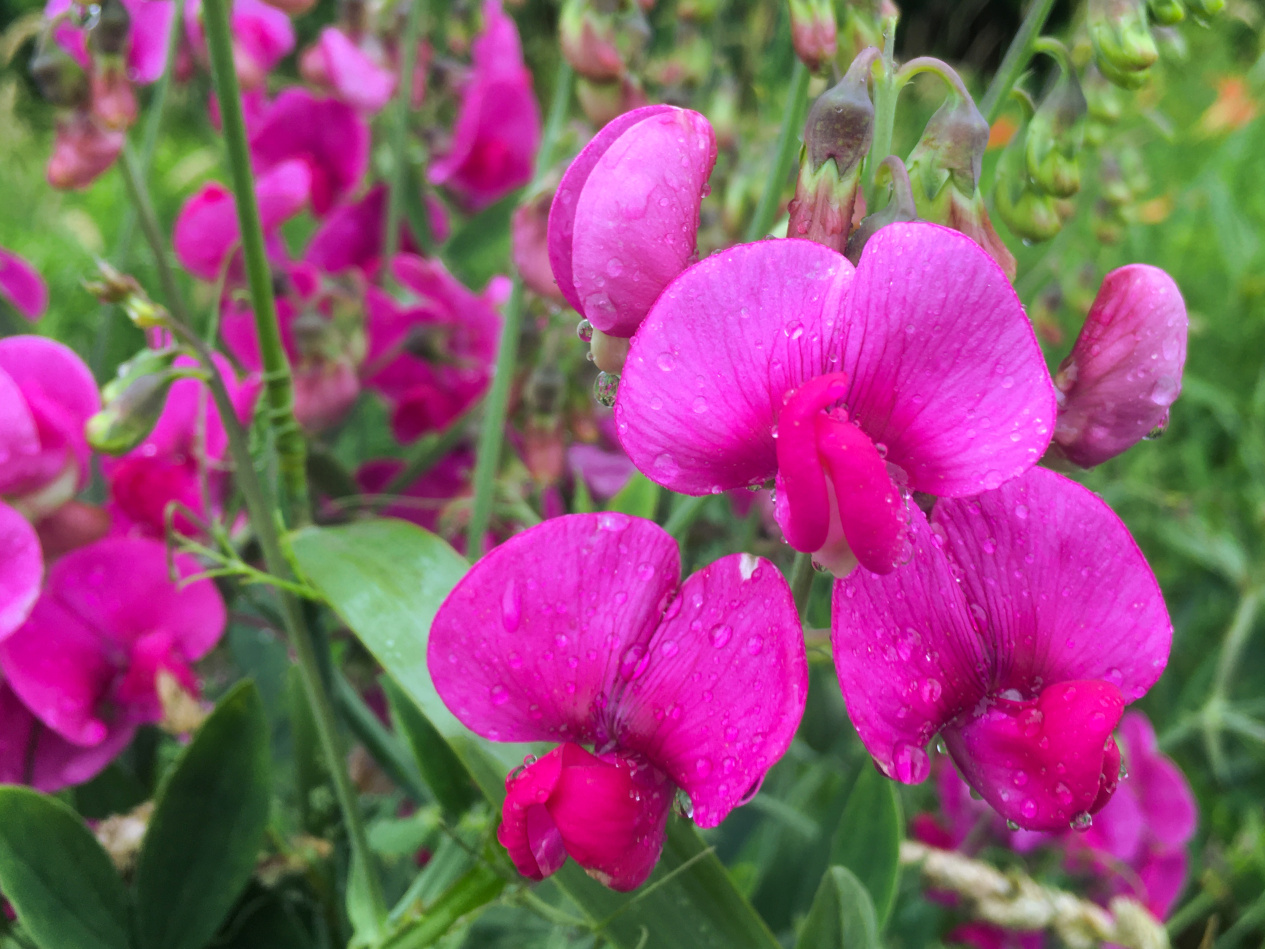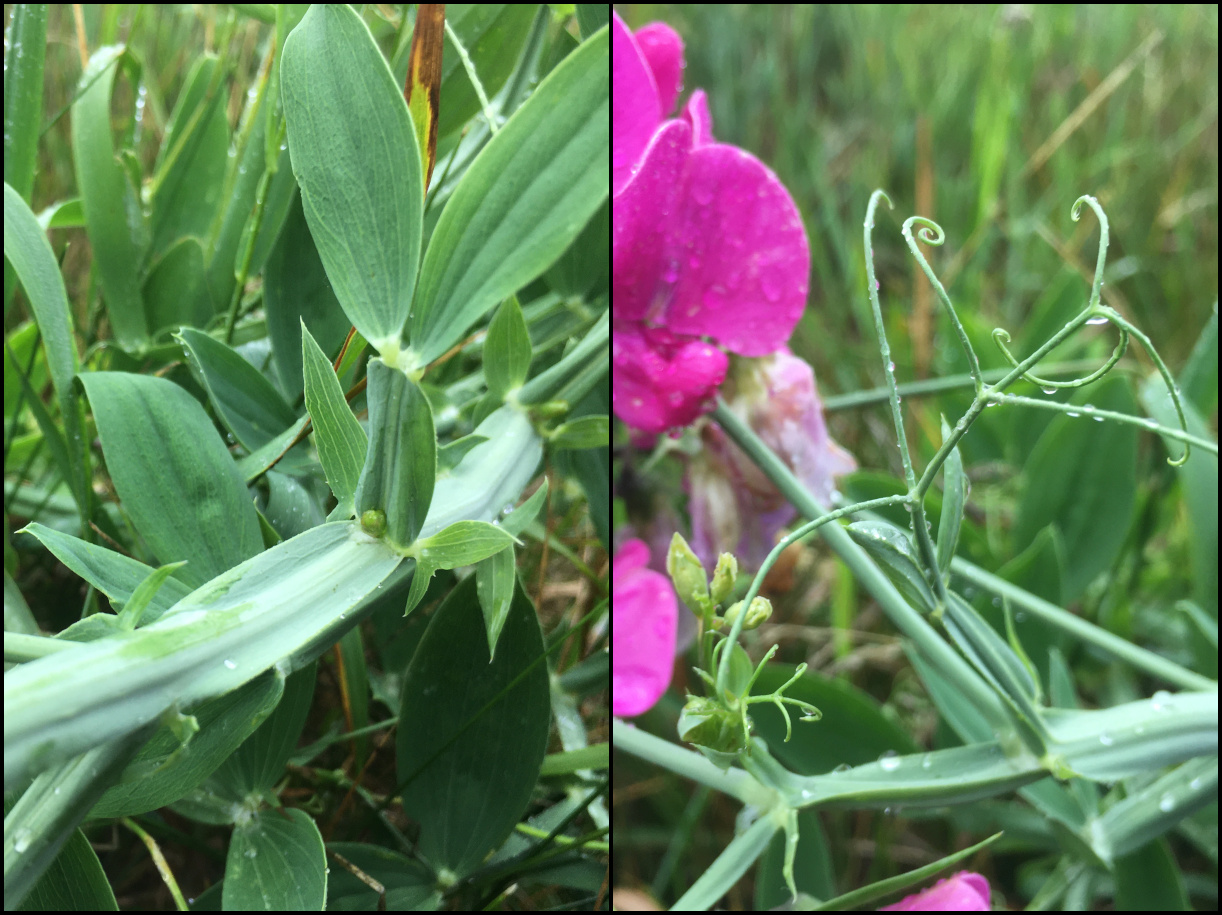Drive-by botany: Poison hemlock and perennial pea
Profiles of common Michigan roadside flora in late June 2021.

Authors’ note: Drive-by botany is a continuing series that highlights flowering plants commonly seen from the road. As a service to new readers, we include the introduction with each article. If you're already familiar with the premise, feel free to skip down to the good stuff.
Has a patch of flowers ever caught your eye as you travelled down the road? It certainly happens to us all the time! As gardeners and naturalists, we're always interested increasing functional diversity in our gardens and landscapes, so we thought it would be fun to consider some of the roadside plants that we see every day. Each article in this series will feature two plant species that are currently blooming and frequently observed from the road. Our goal is to answer two simple questions:
- What are they?
- Would they make good garden plants?
As part of the process, we'll include some biological tidbits and a few useful characteristics for identification. Please note that some of the plants we feature are exotic invasive species; we'll be sure to include recommendations from land management professionals on how to manage them in your landscape.
June 2021, East Lansing, Michigan – week 27, 2,648 growing degree days (GDD) base 32 degrees Fahrenheit
Poison hemlock (Conium maculatum)
Poison hemlock is a tall, eye-catching member of the Apiaceae (carrot) family. Like many other plants in the family, it is a biennial. It begins as a rosette in the first year and then produces tall (6 to 10 feet) stems in the second year with a white umbel inflorescence. All parts of poison hemlock are poisonous if ingested by humans and animals. More information can be found about its toxicity at Poison Control.
Description
Flowers: White umbel inflorescence (umbrella like).
Leaves: Lacey and finely divided leaves, almost fern-like. Similar to Queen Anne’s Lace, but hairless. Also, the mature size of poison hemlock is much taller than the mature size of Queen Anne’s lace. The fine divisions set the leaves of poison hemlock apart from another tall member of the Apiacea family that we may see in Michigan – cow parsnip (Heracleum maximum).
Stem: Hollow and hairless stem with a bluish cast (glaucous) and purple spots, which helps set it apart from other look-alikes.
Seeds/fruit: Small (about 2 millimeters) oblong seeds with distinct ribs. Prolific seed producer.
Height: 6 to 10 feet at maturity

Distribution: Poison hemlock has been documented in 26 Michigan counties. This species can be found on roadsides and other disturbed fields or sites as well as banks, bluffs and shores. Poison hemlock seems to thrive particularly in disturbed moist soil, such as the margins of muck farms and county drains.
Blooming period: Begins to bloom June and into August in Michigan.
Native status: Exotic/introduced. This species is not native to the United States and was introduced from Europe.
Garden uses: Poison hemlock should not be planted in the garden due to its toxicity. If you find poison hemlock in your site and decide to manage it yourself, always wear gloves, goggles and protective clothing. A dust mask should also be worn if mowing. Shower afterwards and be sure to wash the clothes you wore while working with poison hemlock.
Non-chemical management options include digging up the plants, including the root, and mowing or deadheading flowers to prevent seed dispersal. Do not burn the plant material or place in compost if that compost is destined for garden use, as seeds and toxins can remain viable for subsequent years. If your yard waste or trash service does not accept poisonous plants, bury the material in an area that will not be disturbed. Herbicides can be effective on first year plants (in rosette form) or on small second year plants before they flower. You can learn more about non-chemical and chemical management in this article from Michigan State University Extension, “Poison hemlock identification and control.”
Common look-alikes: Queen Anne’s Lace/wild carrot (Daucus carota), hedge parsley (Torilis japonica), false chervil (Anthriscus sylvestris), water hemlock (Cicuta maculate), cow parsnip (Heracleum maximum) and giant hogweed, which is not very widespread in Michigan
Perennial pea (Lathyrus latifolius)
Common names: Everlasting pea, perennial peavine
Perennial pea is a member of the pea family (Fabaceae), the third largest plant family on the planet (only the orchid and sunflower families boast more species). Members of the pea family are often referred to as “legumes” and are famous for their mutualistic relationship with bacteria that absorb nitrogen from the atmosphere and then make it available to the plant.
Description
Flowers: Perennial pea plants have clusters of four to 10 five-petaled flowers approximately 0.75 inches in diameter. Purple, pink and white flowers seem to be the most common colors found in the wild. There are, however, selected cultivars that produce blue and yellow flowers as well. Even more interesting (from a botanical perspective), Lathyrus latifolius is part of a larger subgroup in which the flower petals of member species are arranged in such a way that they form three unique structures: the standard, the wings and the keel (Photo 3).

Leaves: Most legumes have compound leaves and stipules which, when taken together, serve as a strong identifying characteristic. Perennial pea leaves have two lance-shaped (elliptic) leaflets with smooth margins and, with closer inspection, one can usually find small tendrils located between the two leaflets. These tendrils are what it uses to climb up adjacent objects such as fences, trellises and other plants.
Quick definition: Stipules are leaf-like structures located at the intersection of the leaf petiole and stem/branch (Photo 4).

Stems: The stems have what we can best describe as “wings”. They are composed of leaf-like tissue that extend outward from the stem – much like a flange – and serve as another strong identifying characteristic.
Seeds/fruit: Perennial pea produces seed pods called legumes. The term legume refers to plants in the pea family as well as the seed pods they produce. As one might expect, these seed pods often resemble bean or pea pods and are easily recognizable. Once they have matured, it's not uncommon for seed pods to split open and fling their seeds out into the world.
Height: The vine-like stems can exceed of 6 feet in length. In absence of something to climb up, perennial pea plants can form a dense mat on the ground.
Distribution: Lathyrus latifolius has been documented in 42 Michigan counties and has a fairly even distribution across the Upper and Lower Peninsulas. It is regularly found in habitats that experience frequent disturbance (e.g., roadsides and fencerows) -- a common trait of pioneer plant species.
Blooming period: In Michigan, perennial pea starts blooming around mid-June and usually continues until mid-July, if not longer.
Native status: This species not native to the U.S. It escaped cultivation long ago and has since naturalized across the 48 contiguous states.
Garden uses: Despite its exotic status, the USDA considers this species to have a lot of utility in erosion control and woody plant encroachment inhibition. It is a vigorous vine that can be invasive in some habitats. It is not as aggressive as many of our worst invasive species which is why it hasn’t fallen completely out of favor with federal land management agencies. In the garden, perennial pea needs active management to keep it from climbing over other species. As such, we recommend limiting its use to vertical spaces (e.g., arbors, trellises), erosion zones and areas where invasive shrubs are being managed.
Common look-alikes: Sweet pea (Lathyrus oderatus), Singleton pea/wild pea (Lathyrus hirsutus)
Questions? Feel free to contact Jeremy Jubenville or Isabel Branstrom with the MSU Extension landscape team.
Resources
- Michigan Flora (2001) – E. Voss
- USDA NRCS Plant Materials Program



 Print
Print Email
Email





